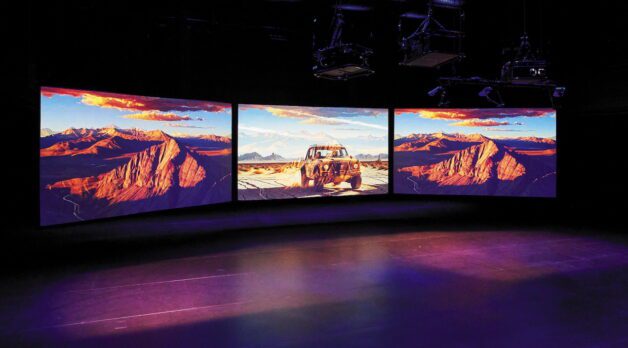Columns
Featured 1/4
Media in the Middle: The Emerging Media Arts Program at University of Nebraska-Lincoln
 Ash Eliza Smith's interaction course at the University of Nebraska-Lincoln
Ash Eliza Smith's interaction course at the University of Nebraska-Lincoln
Asked about the fundamental goals of the program of which she is founding director, Megan Elliott is expansive and enthusiastic. “We have a very strong interest in the myriad places our students can go as storytellers, makers, artists, entrepreneurs and… Read more
-
Life, Compressed: Austin Bunn’s Short Film Screenwriting: A Craft Guide and Anthology
Familiarity is where short films go to die. So says Austin Bunn, rephrasing a statement by the British-Moroccan filmmaker Fyzal Boulifa, who feels that the abundance of shorts characterizing our moment makes playing it safe as a screenwriter the biggest risk of all. Boulifa is just one of many filmmakers cited in Bunn’s new book, Short Film Screenwriting: A Craft Guide and Anthology, published in October 2024 by Bloomsbury. Bunn may be best known to Filmmaker readers as the co-author, with Christine Vachon, of 2007’s A Killer Life: How an Independent Film Producer Survives Deals and Disasters in Hollywood and […]
-
Blue Skies in Park City: Against the “Off Year” Sundance 2025 Narrative

Reports of Sundance’s death are greatly exaggerated. Even before this year’s festival was over, industry journalists rushed to declare its demise, from The Wrap’s Sharon Waxman (“Low Sales. No Standouts. Slow Sundance. Where Does Independent Film Go From Here?”) to The Ankler’s Richard Rushfield (“Get it Together, Indie A-Holes. What part of ‘extinction event’ do you not understand?”). But let’s not jump to conclusions. Maybe “the vibe was off,” as one producer notes, but what do you expect after twin catastrophes—the Los Angeles fires and the inauguration of Donald Trump—were still smoldering during the event? “I think the market was […]
-
Replicating Images: Submerged, AI and Immersive Cinema

In October, Apple released its first scripted immersive film production, Submerged, on Apple Vision Pro (AVP), its mixed-reality headset. The film follows a submarine crew during World War II who fight for survival after enduring a torpedo attack. The high-end technological production included a submarine set, a proprietary 3D camera by Apple and headsets for the crew to monitor the shots in real time. The production design is impressive, the use of close-ups peculiar and novel—it’s a well-crafted film. However, more than the film itself, the experience of watching Submerged on the headset is what truly shines. A making-of trailer […]
-
Gale Force Cinema: Studying with Luis Recoder and Sandra Gibson

On September 26, I flew from Los Angeles to Atlanta, then drove north toward Rabun Gap, eventually turning west on Bettys Creek Road to find the sprawling 600-acre campus of the Hambidge Center in the heavy rain preceding the arrival of Hurricane Helene. I had signed up for a workshop called “Cinema From Scratch: From Camera Obscura to Handmade Film,” with Brooklyn-based artists Luis Recoder and Sandra Gibson, and the urge to meet the pair, whose work with the materiality of cinema I’ve loved for two decades, overrode this Angeleno’s terror of foul weather. Carefully tracking what was being called […]
-
The Future Looking Back At Us: Joanne McNeil on Cyberpunk

This year is the 40th anniversary of William Gibson’s classic novel Neuromancer. It’s a work of singular brilliance that arrived as part of a new vanguard. Back in 1984, in the Washington Post, author and editor Gardner Dozois identified Gibson as part of an emerging trend: new science fiction authors who had eschewed formulaic space operas for “bizarre hard-edged, high-tech stuff.” Dozois called these authors the “cyberpunks,” and the label caught on. Key works of cyberpunk like Neuromancer were produced in the ’80s alongside the boom in personal computers, and again in the ’90s as subscriptions to online services and […]
-
Streaming 3D on the Apple Vision Pro

In the first week of January, I received an email from a programming manager at MUBI—arguably, the leading global streaming platform for arthouse and independent cinema—telling me that the company was working on a new project that would allow it to present stereoscopic (3D) films on its service in the immediate future and asking about the availability of my films’ materials and SVOD rights. Intrigued and perplexed, I verified that I had the rights to all of my solo projects and told MUBI it could include whatever it wanted. A week later, MUBI licensed non-exclusive U.S. and Canadian streaming rights […]


